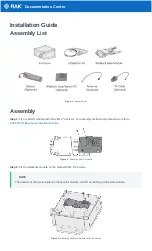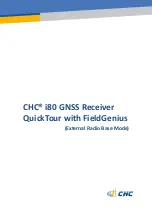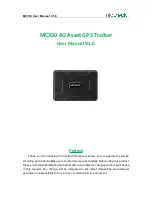
10
First Time Fix
Once the DGPS is installed and powered on, it will
begin to search for satellites and a DGPS beacon signal.
Initially, it may take longer than normal to scan through
the DGPS beacon frequencies. The DGPS 53 will output
corrected navigation data once it has calculated an initial
position fix and sucessfully received a DGPS signal. The
following data will be output in NMEA 0183, Version 2.0
format:
• Latitude/Longitude/Altitude
• Velocity
• Date/Time
• Error Estimates
• Satellite and Receiver Status
• DGPS Beacon Information
Auto-Tuning
Without external commands, the DGPS 53 will
automatically scan frequencies between 283.5-325.0 kHz
@ 0.5kHz steps for 100 and 200 bps stations only. To use
25 & 50 bps, you will need to manually tune the DGPS
53 (pg.13) via the chartplotter, PC or other compatible
source. The DGPS 53 should tune into a DGPS station
within about 10 minutes. The unit will store the last used
frequency in non-volatile memory and default to that
frequency on next use. If you lose DGPS signal, the unit
will attempt to reconnect to the last frequency and if
necessary, tune to another station.
Interfaces
The DGPS 53 interface protocol design is based on
the National Marine Electronics Association’s (NMEA)
0183 ASCII interface specification, which is fully defined
in “NMEA 0183, Version 2.0”
and the Radio Technical
Commission for Maritime Services “RTCM Recom-
mended Standards For Differential Navstar GPS Service,
Version 2.1, RTCM Special Committee No. 104”. Contact
information to obtain copies of these specifications may
be found on page 24. The DGPS 53 interface protocol
also transmits additional information using the conven-
tion of GARMIN proprietary sentences ($PGxxx).
Using the
DGPS 53













































